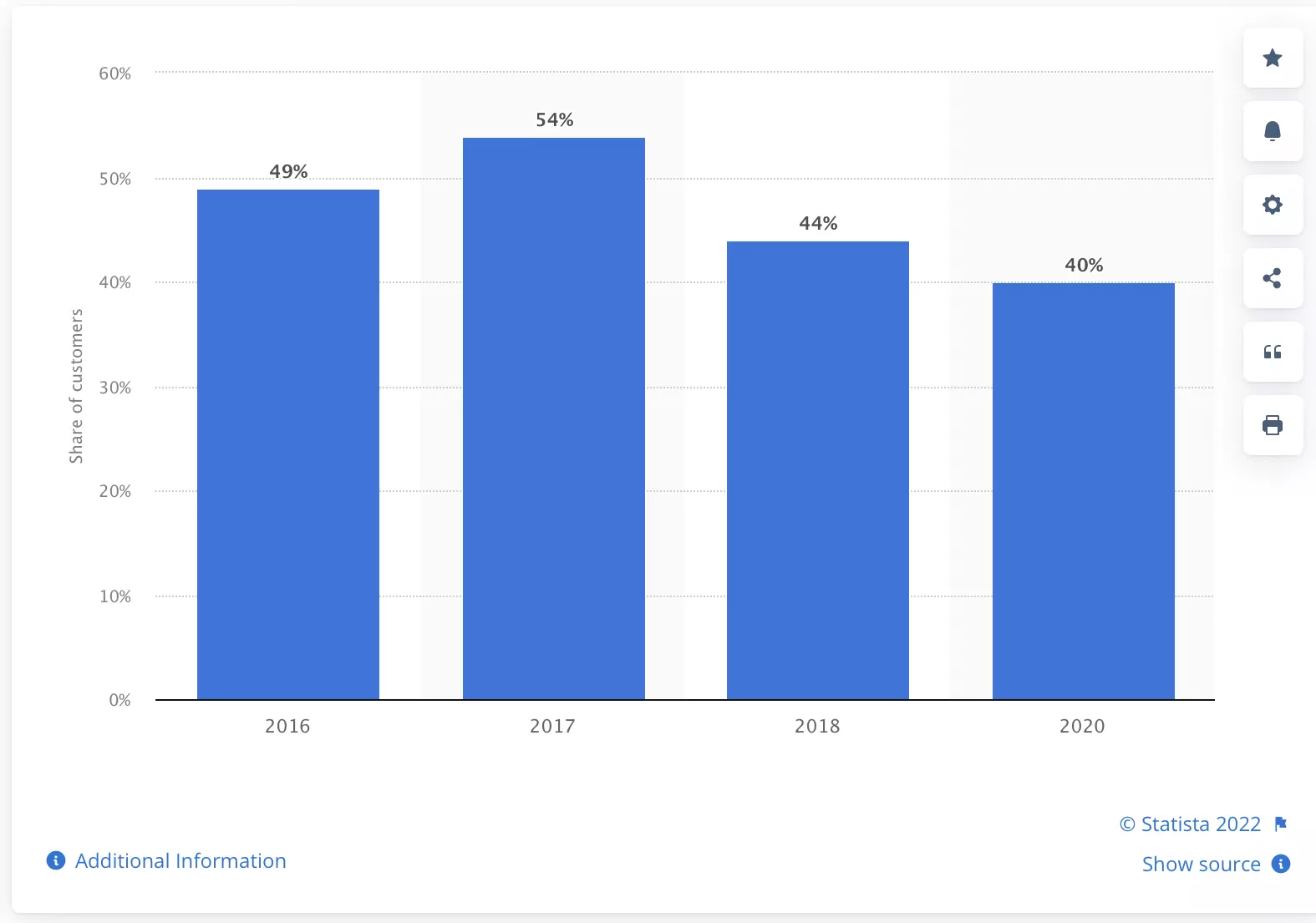How to Respond to an Angry Customer: 7 Email Responses to Calm Dissatisfied Customers
November 24, 2022 7 min read

Working with dissatisfied customers is a vital part of any customer-facing role. Your role is to understand their frustration and work through how to manage it without increasing their frustration or damaging your company’s public reputation. The best outcome is that you reach a mutually satisfactory result that maintains your business’ customer reputation and solves your customer’s problem.
Having the right tools to construct an appropriate email response will help to raise audience email engagement, and promote trust in your business. It will also help to encourage customer retention if frustrated customers know their concerns will be listened to.
What Causes Customer Dissatisfaction?
Many things cause people to become frustrated, whether related to their experience with your business or not. This is a complicated truth of customer service professions because this type of consumer frustration is in no way your fault, but this does not reduce your customer’s frustration or anger. In fact, it may make it worse.
Certain situations may heighten customer anger:
- Products that require specialist expertise to repair e.g., IT systems
- Products or services with a timing element e.g., limited-time sign-in links
- Systems that could result in lost wages e.g., work logs or payroll systems
- Services that revolve around emotional situations and responses, e.g., healthcare, funeral care, and childcare.
Understanding what causes customer frustration will help you to empathize with angry customers and employ this understanding in formulating an email response.
How to Respond to an Angry Customer
There is an art to responding to an angry customer. Some customers may have obvious reasons for their frustration, while others may appear frustrated with little cause. Whatever the source of their frustration, an angry customer should know that their concerns are being heard and acted upon.
AI-powered Chatbots are now so advanced that they can determine a customer’s mood from the messages sent, and they can be trained to provide a suitable response to help calm the situation.
Customer service professionals can use these seven email responses to calm dissatisfied customers to manage difficult customer interactions. Be sure to have your glossary of email terms on hand to ensure that you provide the best service possible for your customers.
1. The Acknowledgment
The first step towards managing interactions with angry customers is to acknowledge their feelings. Frustration only increases when customers have their feelings and problems dismissed. Your acknowledgment email should validate your customer’s anger and reasons before offering any solution.
Dear [name],
We thank you for getting in touch with [company name].
I apologize for the inconvenience that this matter has caused you. I understand that this is a frustrating issue, and I thank you for reaching out so that we may try to solve it for you.
We are aware that this [product/feature/service] may cause issues, and we are working to resolve it.
Kind regards,
[company sign-off]

Image sourced from Statista.com
Following this, you may wish to add further information or offer further assistance.
2. The Answer
A lot of customer frustration can be solved by being provided with a straightforward answer. If there is a simple answer to your customer’s frustration, then communicate that without being condescending or rude.
Dear [name],
Thank you for getting in touch with [company name] customer support department.
We are aware of [Issue] and are working to fix it. In the meantime, [issue] is easily resolved.
[From here – lay out each step of the solution and by whom it needs to be done]
If you have any further questions, please feel free to reach out to us on [phone] or at [email/contact form].
Kind regards,
[company sign-off]
It’s helpful to have common files or replacement parts readily available for most issues. For example, having key documents that your service users might need is a good idea.
3. Reassurance
Sometimes, issues with a product or service can cause worry or stress. This may be because the customer or client has invested a lot of money into your business or because they rely on your product for daily living and working.
Part of your response to these situations needs to be reassurance, especially if the fault with the product or service does lie with your company. But, regardless of how the fault has occurred, it’s important to acknowledge and soothe these anxieties before moving on to a solution.
Dear [name],
Thank you for reporting [issue]. We apologize and understand that this matter may cause inconvenience or distress.
Firstly, we would like to assure you that you will incur no additional cost as a result of this issue.
[Insert information as appropriate – for example, does the lack of service mean that your customer cannot submit tax receipts on time? Or that they are unable to pay their staff accurately. This section is about cooling customer fears, and part of this may be laying out practically how you will avoid the customer incurring cost or harm].
I have included some resources should you wish to investigate the topic further:
- [Link to helpful resources or information banks]
Please feel free to contact us at [number], by live web chat at [web address], or by email at [email].
Kind regards,
[company sign-off]
4. Further Information
Some problems are not easily fixed, and this is where customers can become very stressed and angry. To avoid this, include as much information as possible in a longer email than you might typically send.
Dear [name]
Thank you for your query.
The solution to this issue is as follows. Please feel free to get in touch with us if you have any further questions regarding this process.
[This is your space to detail specific processes to fix the named issue – for example, how to install a new update to the software or how to check the wiring inside an electrical product]
For more information, please visit [resource pages] or contact us on [phone/email]
Thank you
[company sign-off]
Email is not always the best way to respond to an angry customer, especially if their issue requires more information. Consider looking into hosted cloud communication centers or the best cloud phone system for small business to support your customer support team working through email.
Being able to communicate with customers in several ways reduces the likelihood of miscommunication and increased anger.
5. An Offer of Remuneration or Action
It’s a cliche, a consumer expecting reparations for an issue with a product or service. But, when used in the right situation, it goes a long way towards promoting customer retention and making up for any genuine fault on the part of the company.
Dear [customer name],
We apologize for the inconvenience caused to you by [issue]. We have now resolved this issue, but please feel free to get in touch again should you need any further assistance.
Further to this, we would like to offer you a free consultation [or other services/product/refunded payment] in order to identify and prevent further issues [or other reasoning].
Please feel free to reply to this email or call [number] in order to access this.
Once again, we appreciate your patience and thank you for making us aware of this issue.
Kind regards,
[company sign-off]
Always be sure you are authorized to offer such remuneration. Additionally, anything you provide to consumers should be relevant to the product or service you offer to mitigate the impact of this or future problems.
6. A Sincere Apology
Sometimes, you might be unable to solve a customer’s problem. Unforeseen issues arise with products and services from time to time, and customers know this. However, you should still acknowledge this failure for what it is and offer some practical advice.
Dear [name],
Thank you for contacting [company] customer service.
Unfortunately, we have exhausted all avenues of support in line with our current understanding of the product and our support processes.
If you have any additional information which may be relevant to this case, please feel free to get back in touch with us, and we can review the matter for you.
We sincerely apologize for this inconvenience and for being unable, in this case, to solve the issue.
[company sign-off]
7. Drawing the Line
Sometimes a frustrated customer’s problem cannot be solved. While some people will be understanding, others may escalate the conflict to the point where it becomes difficult or unsafe for your staff to continue the conversation.
At this point, you may need to terminate the interaction. It’s essential to do this professionally and reasonably.
What to Remember
Most people will encounter angry customers in their professional lives. A lot of us will be the angry customer in our personal lives. It’s essential to manage customer frustration with empathy and understanding.
Customers are likely to respond positively to a genuine apology and an attempt at a solution. Remember to listen carefully to their issue and the fixes they have already tried when offering a solution to their problem.
Author Bio
Richard Conn is the Senior Director for Demand Generation at 8×8, a phone system provider and communication platform with integrated contact center, voice, video, and chat functionality. Richard is an analytical & results-driven digital marketing leader with a track record of achieving major ROI improvements in fast-paced, competitive B2B environments. Richard has also written for other domains such as PPC Hero and Really Simple Systems. Check out his LinkedIn.



